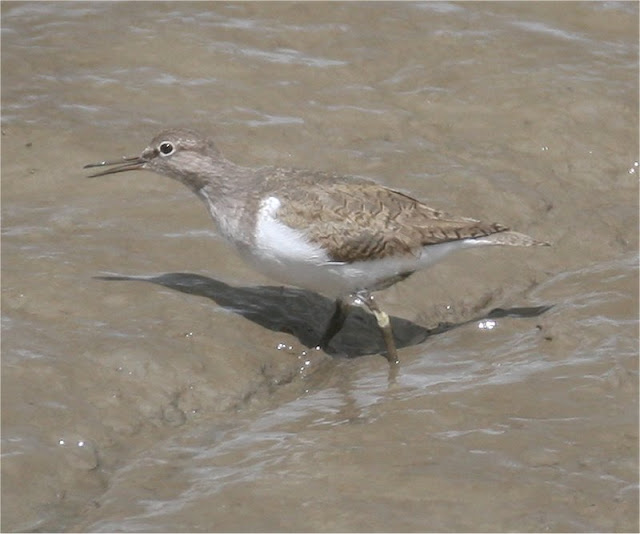Adult Shelduck © John N Murphy
As the summer draws towards an end, we find our mudflats and estuaries completely emptied of birdlife. The thousands of wading birds and ducks
that bred in the high Arctic for our summer, are slowly making their way south. Only few birds
remained to nest in these locations. One such bird is the goose like Shelduck.
These large ducks
breed on the shores of these vast mudflats and estuarine basins. The
Shelduck is one of the most attractive of our waterfowl. It is white and black with a vibrant
red bill that has a shield or shell like appearance to the inner/upper bill. At
this time of the year the female has finished incubating the eggs and the young
ducklings that have hatched are just about ready to march out of their downy
nest from within an old rabbit burrow or from under a bramble bush. In recent years Shelducks have begun to
move inland, breeding more frequently on lakeshores and riverbanks.
Shelduck © John N Murphy
These large ducks eat the
smallest of invertebrates within the mud.
They specialise in a small cone shaped snail the
Hydrobia ulvae, which is present in
almost all estuaries, and often in large numbers. Spatial distribution of
Shelducks is strongly influenced by the behaviour of this prey, particularly in
relation to water depth. They can even feed at night, detecting prey by tactile
clues using their bills.
What makes these Shelducks
unique is that after breeding they do something that no other waterfowl does.
Once the young have grown to adult size the family parties prepare themselves
for a long journey. Every year
over 100,000 Shelducks from the North-west European population of Ireland,
Britain, Belgium, Holland and many more countries, depart on a migration to the
Waddenzee, or Wadden Sea that lies between Holland and Northern Germany. They
head their every year so that the adults can moult new feathers after the
breeding season. The Waddenzee consists of many square miles of gently shelving
sand and mudbanks largely covered at high water. All Shelduck except those bred
during the year need to renew wing and tail feathers simultaneously. For about
four weeks they are unable to fly.
Once moult has completed
and new features are renewed, birds return to their old breeding grounds in
early to late autumn. This
migration begins in a rather leisurely fashion. Shelduck returning to breeding
areas in this country will often arrived back by late October. But in some
years return can be delayed by up to two months.
Adult Shelduck © John N Murphy
Juvenile Shelduck eating Eel Grass © John N Murphy














































